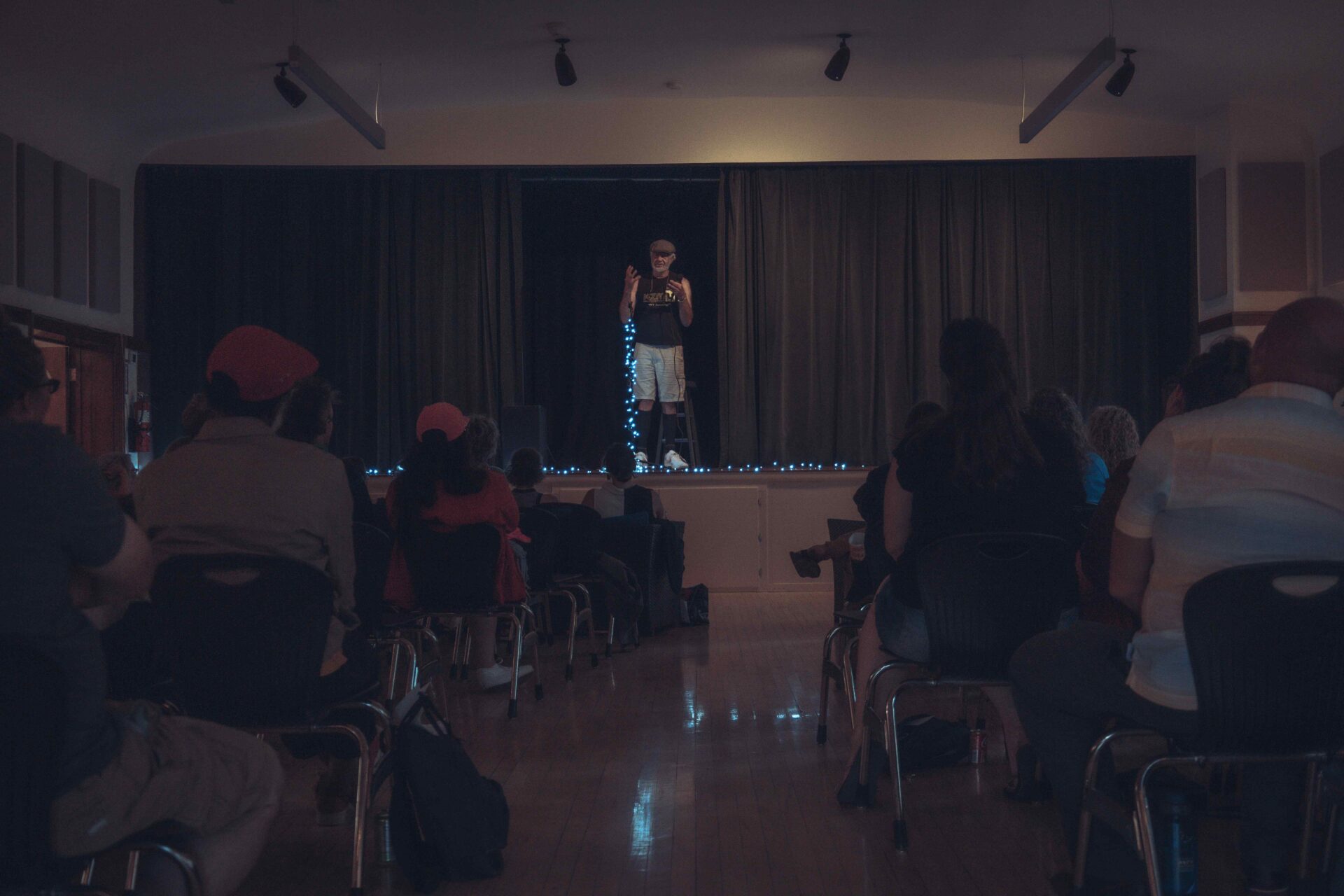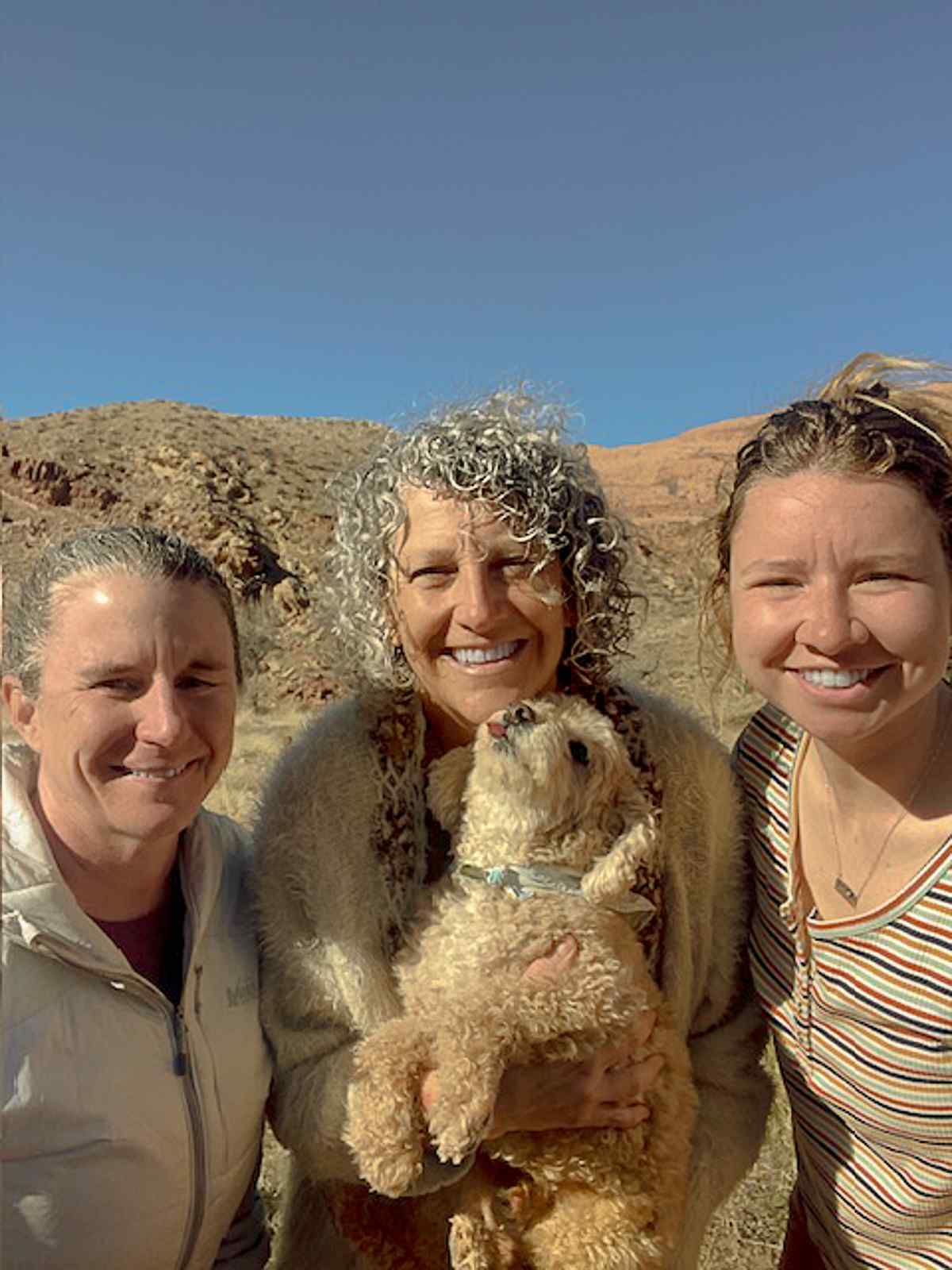Documentary Demon Mineral to be shown on April 16
The documentary “Demon Mineral” examines the legacy of uranium mining on the Navajo Nation. The film will be screened at Star Hall on April 16, followed by a conversation with documentary producer Hadley Austin, Sarah Fields of Uranium Watch and Yolanda Badback from White Mesa Concerned Community, as well as tabling from HEAL Utah, an environmental protection non-profit focused on legislative action.

“She tells an intimate story with a great deal of respect,” Rural Utah Project field organizer Sam Van Wetter said of Austin. The event is being sponsored by the Rural Utah Project, a statewide nonprofit.
Moab Sun News chatted with Austin about her personal path and passion for producing the film and her desire to engage the public in the discourse around future threats to the region through mining.
Producing “Demon Mineral”
Austin first became exposed to the issue of uranium mining in 2000. From the 1940s to the 1980s, uranium mining proliferated on the Navajo Nation; the Navajo Nation banned uranium mining and processing on its lands in 2005.
Austin was studying political science and dove deeply into the topic of water and how it’s managed.
“In Arizona, water and mineral laws are wild,” she said, explaining her fascination with the topic. She added that the laws are similarly complex and interesting on federal lands and lands held in trust, or reservations.
As she studied water protection, Austin became involved in social action networks, including the Flagstaff Activist Network, and joined in the anti-nuclear movement.
“The anti-nuclear movement is holistic, community-oriented, and international,” she said. “Some folks are focused on miners’ rights, miners getting financial compensations; some on downwinders, people that were alive during the [atomic bomb] tests in Nevada and, because air travels, Arizona and Utah; others are involved in some sort of critique of mineral extraction.”
Austin saw firsthand that some people on the Navajo Nation still lived in homes that were built with rocks from the uranium mines. The work she did on the ground included helping move people out of uranium rock houses, and into trailers.
When Austin left Flagstaff and moved to Chicago, she became a history teacher on Chicago’s west side. She stayed in touch with the issues and taught them to her students despite the limited framework of the curriculum, where “colonizers were only European.”
Inspiration at Standing Rock
Then, in 2016, thousands of protestors opposing the Dakota Access Pipeline stood up for water rights on the Standing Rock Sioux Reservation. Protesters worried that the oil pipeline threatened the region’s water. This was a pivotal moment for Austin, who flew to North Dakota to bear witness.
“America doesn’t know, this is the third time this place has been significant. First, the battles of the 19th century, 1970s American Indian Movement at Wounded Knee and now Standing Rock,” Austin said of the importance of this place in Native American activism. “I just wish more people knew.”
She was moved that all of America seemed to care about preserving water that hadn’t been damaged yet. The public discourse reflected a leaning towards considering water rights on tribal lands. At the same time, the federal government sent oil barrels filled with water to alleviate the issue of access to clean water in the Navajo nation. This contrast was striking to Austin.
Soon after, she quit teaching and opened a production company with her partner, Yoni Goldstein. Equipped with a basic film kit with retrofitted old lenses, budget sound equipment and an extensive community, they started making documentaries.
“That community grew as we started working. A lot of the participants in the film were deep collaborators; they had a say in their depictions,” she said of the crew around “Demon Mineral.”
The making of the film
The challenges of making the documentary, financially and geographically, were significant. Often Austin and her crew would rent a car and pay for gas with their own funds to visit many of the affected areas. They raised $100,000 through the Redford Center, the Bay Area Video Coalition and the Puffin Foundation, which supports art that has an environmental focus.
“It was important to me to cover the entirety of Dinétah, from the furthest reaches to the center—from Oljato-Monument Valley, Church Rock to Cameron, to Blue Gap right in the middle,” Austin said.
She collected stories from each place, gathering a small sample of the extensive impacts of mines. The final product came together after five years of extensive research and interviews. Austin acknowledged the many people who contributed to the documentary.
“Films don’t exist without the talent of the team,” she said. “Everyone deserves equal recognition, including every single person who contributed with their time, and their lifework.”
Austin admits it’s an unusual film, valuing both art and information. The film is scaffolded with the skilled eye of an educator. She jokes about the secret lesson plans incorporated into the film and sums it up in three concepts: Uranium is “stuff from space that is not inherently bad.” Uranium mining affects people’s everyday lives in tangible ways. This is an ongoing problem that is persistent in the present.
“[The film’s] purpose is to be beautiful and educational,” she said. “People leave it and don’t even realize how much they learn.”
The film moves in “rez time,” Austin said, referring to long takes and conversations that are lengthy, in part due to the descriptive nature of the Diné language. Austin views “rez time” as “the time that mutual consideration takes. It’s respectful, people slow down to listen—being responsive, rather than reactive.”
While the topic of uranium may be overwhelming, Austin assures viewers that they can be moved by the film without needing to be an expert on the topic.
More information on the film can be found at ruralutah.org/film. The film is free to attend, though an RSVP is requested. The screening will be held at Star Hall (159 E. Center Street, Moab) on April 16 at 7 p.m. Doors open at 6:30 p.m.
The event is co-sponsored by the Grand County Public Library, Moab to Monument Valley Film Commission, Working Films & HEAL Utah.



